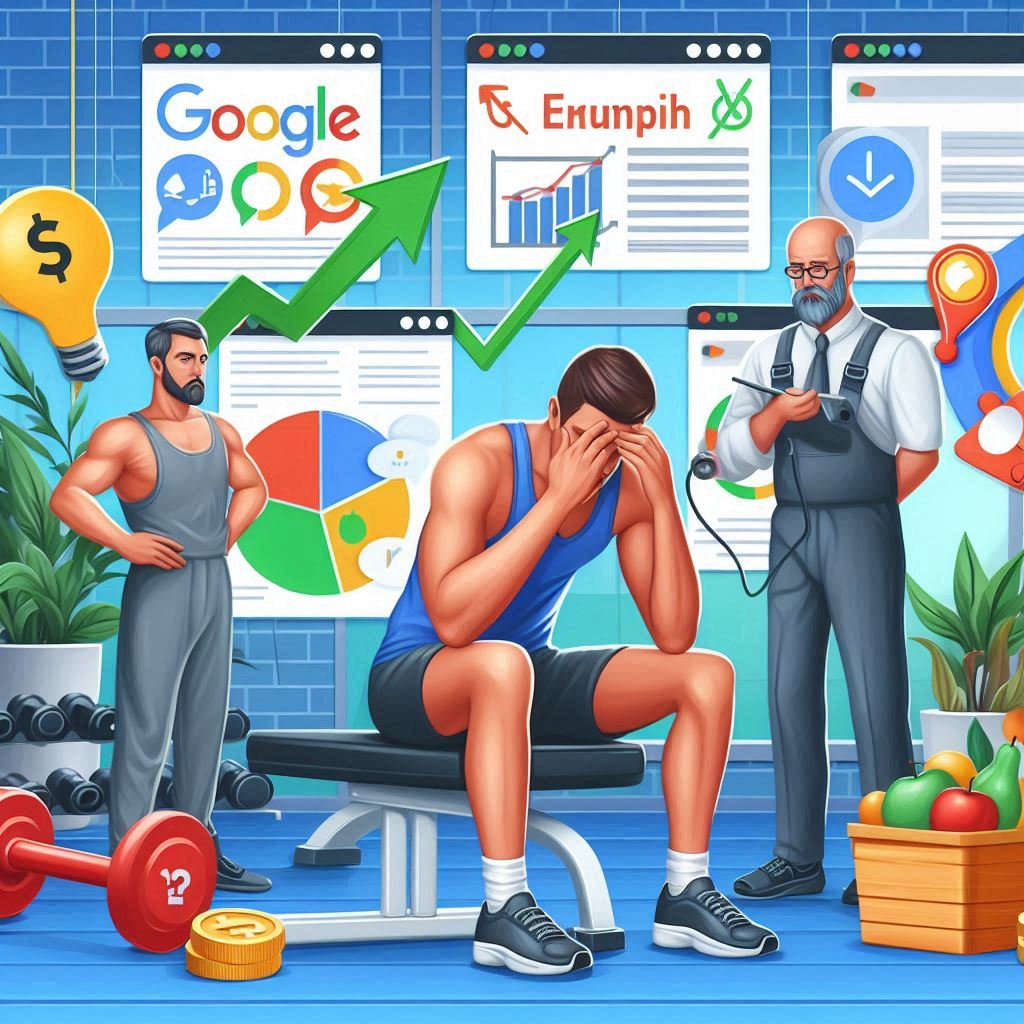Running a gym requires not only maintaining excellent facilities and services but also effectively marketing to attract new members. Google Ads is a powerful tool for reaching potential customers, but many gym owners make common mistakes that can hinder their advertising success. Here are the top nine mistakes gym owners make with Google Ads and how to avoid them.
1. Not Using Location Targeting Effectively
Mistake: Failing to set proper location targeting means your ads might be shown to people far outside your gym’s service area, wasting your budget on irrelevant clicks.
How to Avoid: Use Google Ads’ location targeting feature to focus your ads on people within a specific radius of your gym. For example, targeting users within a 10-mile radius ensures your ads reach potential members who are likely to visit your gym.
2. Ignoring Negative Keywords
Mistake: Not using negative keywords can result in your ads being shown for irrelevant searches, leading to wasted clicks and budget.
How to Avoid: Regularly update your negative keywords list to exclude terms that don’t align with your services. For instance, if you only offer adult fitness classes, add terms like “kids,” “child,” or “youth” to your negative keywords.
3. Poor Ad Copy
Mistake: Creating generic or unengaging ad copy can fail to capture potential members’ attention and encourage them to click through.
How to Avoid: Write compelling ad copy that highlights your gym’s unique selling points. Use action-oriented language and include a strong call-to-action (CTA). For example, “Join now for a free trial week!” is more engaging than “Sign up today.”
4. Not Utilizing Ad Extensions
Mistake: Skipping ad extensions can result in missed opportunities to provide additional information and increase your ad’s visibility.
How to Avoid: Take advantage of ad extensions such as location, call, and sitelink extensions. These provide potential members with more ways to interact with your gym, such as finding your location, calling directly from the ad, or visiting specific pages on your website.
5. Poorly Designed Landing Pages
Mistake: Sending users to poorly designed or irrelevant landing pages can result in high bounce rates and low conversion rates.
How to Avoid: Ensure your landing pages are relevant to the ad and provide a clear path to conversion. If your ad promotes a free trial, the landing page should prominently feature a signup form for the trial. Make sure the page is visually appealing, loads quickly, and is mobile-friendly.
6. Overlooking Mobile Optimization
Mistake: Ignoring mobile users can result in a poor experience for a significant portion of your audience, given that many people use their smartphones for searches.
How to Avoid: Ensure your ads and landing pages are optimized for mobile devices. Use mobile-specific ad formats and make sure your website is responsive, offering a seamless experience on both desktops and mobile devices.
7. Not Tracking Conversions
Mistake: Failing to track conversions means you won’t know which ads are driving memberships and which aren’t, making it difficult to optimize your campaigns.
How to Avoid: Set up conversion tracking in Google Ads to monitor actions such as form submissions, calls, and membership sign-ups. This data is crucial for understanding the effectiveness of your campaigns and making informed adjustments.
8. Setting and Forgetting Campaigns
Mistake: Launching a campaign and then not regularly reviewing or adjusting it can lead to suboptimal performance over time.
How to Avoid: Regularly review your campaign performance. Analyze key metrics such as click-through rate (CTR), conversion rate, and cost per conversion. Make necessary adjustments to your bids, keywords, and ad copy to improve performance continuously.
9. Overlooking Seasonal Trends
Mistake: Not taking into account seasonal trends and events can result in missed opportunities to capitalize on peak times for gym memberships, such as New Year’s resolutions or summer fitness goals.
How to Avoid: Plan your campaigns around key seasons and events. For example, run special promotions in January when many people are looking to start new fitness routines, or in the summer when people are preparing for vacations. Tailor your ad copy and offers to match the season.
Suggested reading : How To Use Google Ads To Drive Local Traffic To Your Gym
Conclusion
Avoiding these common mistakes can significantly improve the effectiveness of your Google Ads campaigns, driving more local traffic to your gym and increasing memberships. By using location targeting, optimizing your ad copy and landing pages, tracking conversions, and staying on top of trends, you can maximize your advertising budget and attract more potential members to your gym. Implement these strategies to ensure your Google Ads campaigns are as successful as possible.

I am Ashutosh – a seasoned digital marketer, bringing digital transformation to businesses, complementing businesses’ growth via generating qualified leads, drive site inbound traffic via organic and inorganic approach, & build their brands through useful, well-designed marketing strategies and Marketing Automation implementation via Chat GPT, HubSpot & Zoho.







